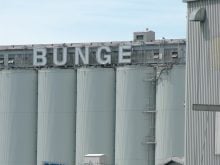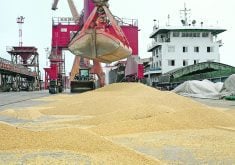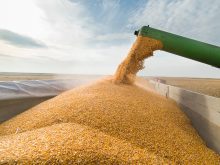With bad economic news darkening many people’s view of the future, hog producers are sitting in a rare ray of sunshine.
The U.S. pig herd is still not growing, which means producers will probably have at least two more years of profitability before they have to worry about the price cycle’s down side rolling around again.
“We should be able to breathe easily this year,” said University of Missouri hog market analyst Ron Plain.
“It looks pretty good until the fourth quarter of 2003.”
Read Also

Defence investments could benefit agriculture
A bump in Canada’s NATO spending commitments could lead to infrastructure investments that would benefit rural areas
The United States Department of Agriculture recently reported that the U.S. breeding herd is not only static, but is actually one percent below last year levels. The same goes for the number of market hogs on farms.
Farrowing intentions over the winter are slightly ahead of last year’s same-time production, but not enough to cramp slaughter capacity in the fourth quarter of 2002.
To run out of slaughter room, U.S. hog production would have to increase by seven percent in the next year, something Plain thinks is unlikely.
Slaughter capacity is only a constraint in the fourth quarter of each year, because hog production is seasonal. Sows have high fertility rates in the winter, but low fertility rates in late summer. That means the highest number of hogs always hits packers in the fall.
Because of this, producers are pretty much guaranteed another good year if winter farrowings do not create enough pigs to push packer capacity in the fourth quarter.
Producers have had about 18 months of profitability, but hog production has not risen the way hog cycle wisdom says it should have.
Plain said this shows the lasting impact of the 1998-99 price crash, which may be a permanent change in producer mentality.
“We’re making money and not growing,” Plain said.
“Historically, we’ve gone through this expansion and contraction thing called the cycle that’s based very closely on recent profitability. But the amount of variation over this cycle and future cycles may be dampened a great deal.”
He chalks this up to producers who are gun shy about another price collapse, bankers unwilling to take risks with hog barn investments, and tough laws in many states that cramp hog barn development.
Chuck Levitt, a meat market analyst with Alaron Futures and Options in Chicago, said there is no sign that American hog production will suddenly surge. Expansion is more likely in Canada.
“We would rather have you guys expand,” Levitt said.
“We have put so many rules and regulations and restrictions on the industry that the structure of the industry is being challenged.”
He said that continues to provide a big market for Canadian exports of weanling and feeder pigs.
“As long as there are less environmental and regulatory constraints on Canadian production economically and viably producing a large number of weanling and feeder pigs that can be brought down to the U.S., then that situation will continue to grow.”
Pork demand has been strong for years, which is unlikely to change soon, analysts said.
Packer capacity is the fundamental threat to producer prices, and the one factor producers should watch closely, Plain said.
It has actually shrunk in the past year and there are no plans for large new plants in the U.S.
Packers have had poor returns on their investment for many years and few companies relish the prospect of building new facilities, he said.
With stagnant slaughter capacity, producers are fortunate pig numbers aren’t growing, Plain said.















